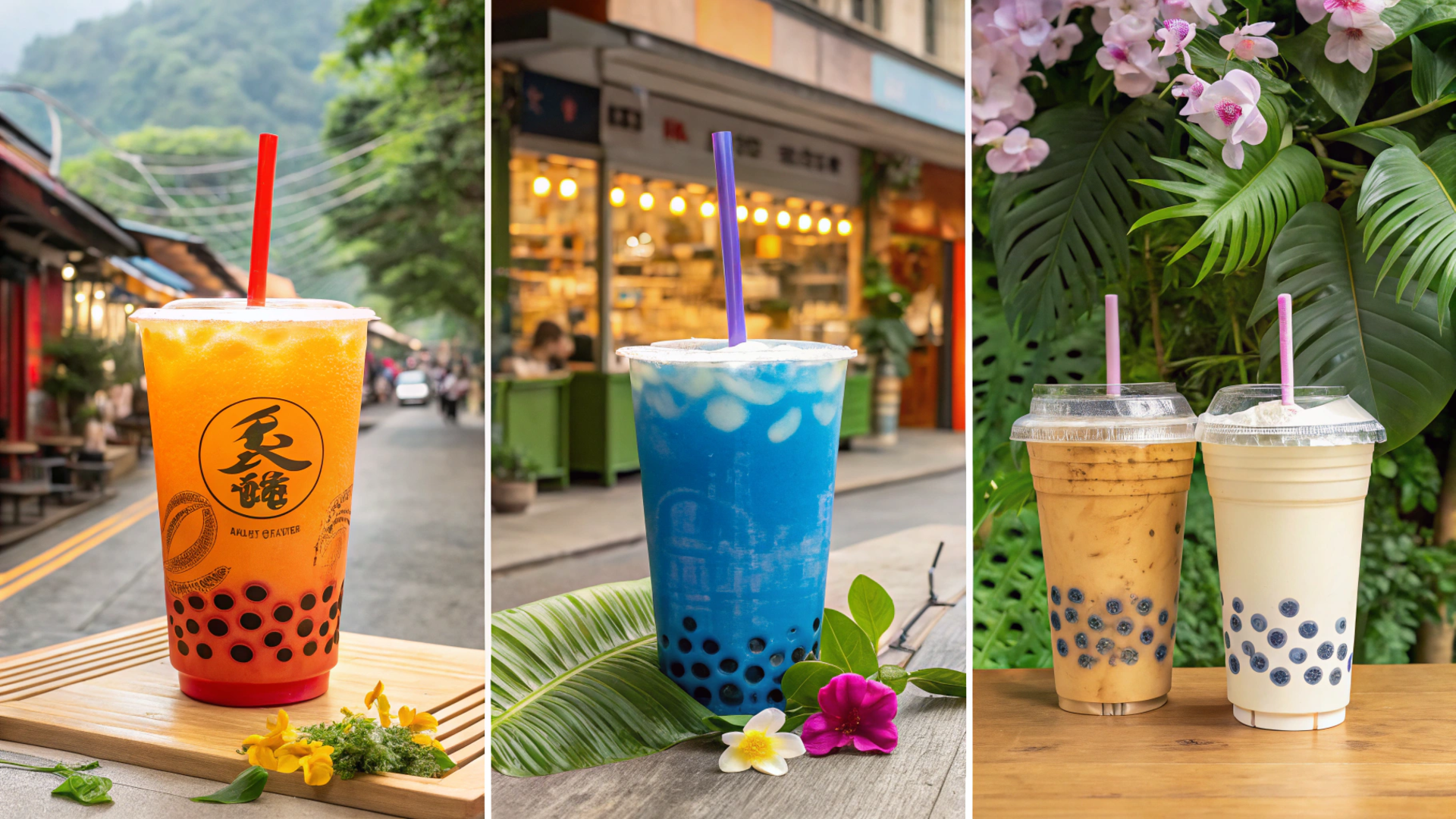I still remember the first time I tried bubble tea in Taipei. The chewy tapioca pearls, the creamy milk tea, the way it felt like a dessert and a drink all in one—it was love at first sip.
But as I traveled across Asia, I realized bubble tea was just the beginning. From fermented rice wines to neon-blue butterfly pea teas, Asia’s drink scene is as diverse and vibrant as its cultures.
Whether you’re a curious foodie or a seasoned traveler, Asia’s unique drinks are an adventure for your taste buds.
Let me take you on a journey to discover the 10 most unique drinks in Asia—each one a story in a cup.
1. Bubble Tea (Taiwan)
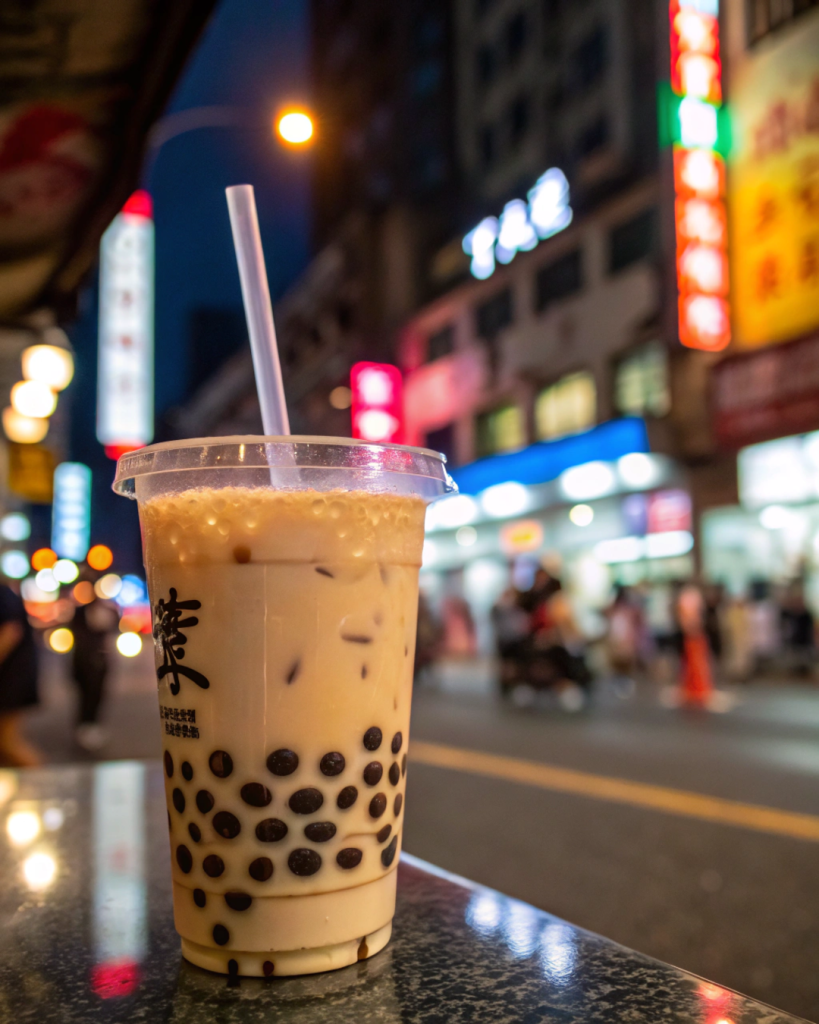
Why Bubble Tea?
Bubble tea isn’t just a drink; it’s a cultural phenomenon. Born in Taiwan in the 1980s, this sweet, creamy tea with chewy tapioca pearls has taken the world by storm. But trust me, nothing beats sipping it in its homeland.
My Experience: A Bubble Tea Pilgrimage
On my first trip to Taipei, I made it my mission to try bubble tea from the original shop, Chun Shui Tang. The moment I took that first sip, I understood why people line up for hours. The balance of flavors, the texture of the pearls—it was perfection.
Essential Visitor Info
- Where to Try: Chun Shui Tang (Taipei) or Coco (chain across Asia).
- Cost: 50–70 TWD (1.50–1.50–2.50) per cup.
- Flavor Recommendations:
- Classic milk tea with pearls.
- Taro milk tea for something sweet and nutty.
- Local Tips:
- Ask for “less sugar” (“shao tang”) if you prefer it less sweet.
- Try adding grass jelly or aloe vera for extra texture.
2. Sake (Japan)

Why Sake?
Sake, Japan’s iconic rice wine, is more than just a drink—it’s a centuries-old tradition. Brewed with precision and care, sake ranges from sweet and fruity to dry and earthy, making it a must-try for any traveler in Japan.
My Experience: A Sake Tasting in Kyoto
During a visit to Kyoto, I joined a sake tasting tour at a local brewery in Fushimi, the sake capital of Japan.
The brewer explained how the rice polishing ratio affects the flavor, and I sampled everything from junmai (pure rice sake) to daiginjo (premium sake). My favorite was a floral, slightly sweet sake that paired perfectly with sushi.
Essential Visitor Info
- Where to Try: Fushimi Sake District (Kyoto) or Izakaya bars across Japan.
- Cost: 500–1,500 JPY (3.50–3.50–10) per glass.
- Flavor Recommendations:
- Nigori (unfiltered, creamy sake).
- Genshu (undiluted, strong sake).
- Local Tips:
- Say “Kanpai!” (Cheers!) before drinking.
- Pair sake with izakaya dishes like yakitori or edamame.
3. Thai Iced Tea (Thailand)
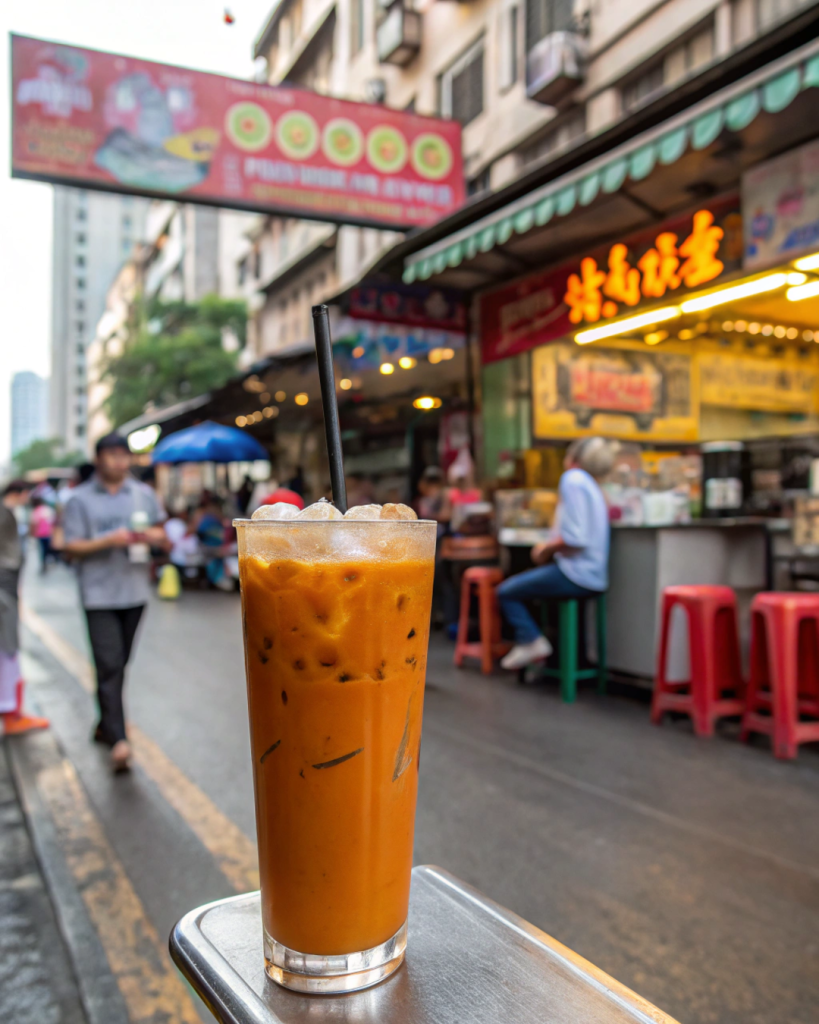
Why Thai Iced Tea?
Bright orange, creamy, and sweet, Thai iced tea (cha yen) is a refreshing treat that’s perfect for Thailand’s tropical heat.
It’s a blend of strong black tea, spices like star anise, and sweetened condensed milk—a flavor combination you won’t find anywhere else.
My Experience: A Street Stall in Bangkok
I first tried Thai iced tea at a bustling street stall in Bangkok’s Chatuchak Market. The vendor poured the tea from a height, mixing it with condensed milk and ice in one fluid motion.
It was the perfect pick-me-up after hours of shopping in the heat.
Essential Visitor Info
- Where to Try: Street stalls in Bangkok or Chatuchak Market.
- Cost: 25–40 THB (0.70–0.70–1.20) per glass.
- Flavor Recommendations:
- Classic Thai iced tea.
- Thai iced green tea for a lighter option.
- Local Tips:
- Ask for “mai wan” (less sweet) if you prefer a less sugary drink.
- Try it with a splash of coconut milk for a tropical twist.
4. Bintang Beer (Indonesia)
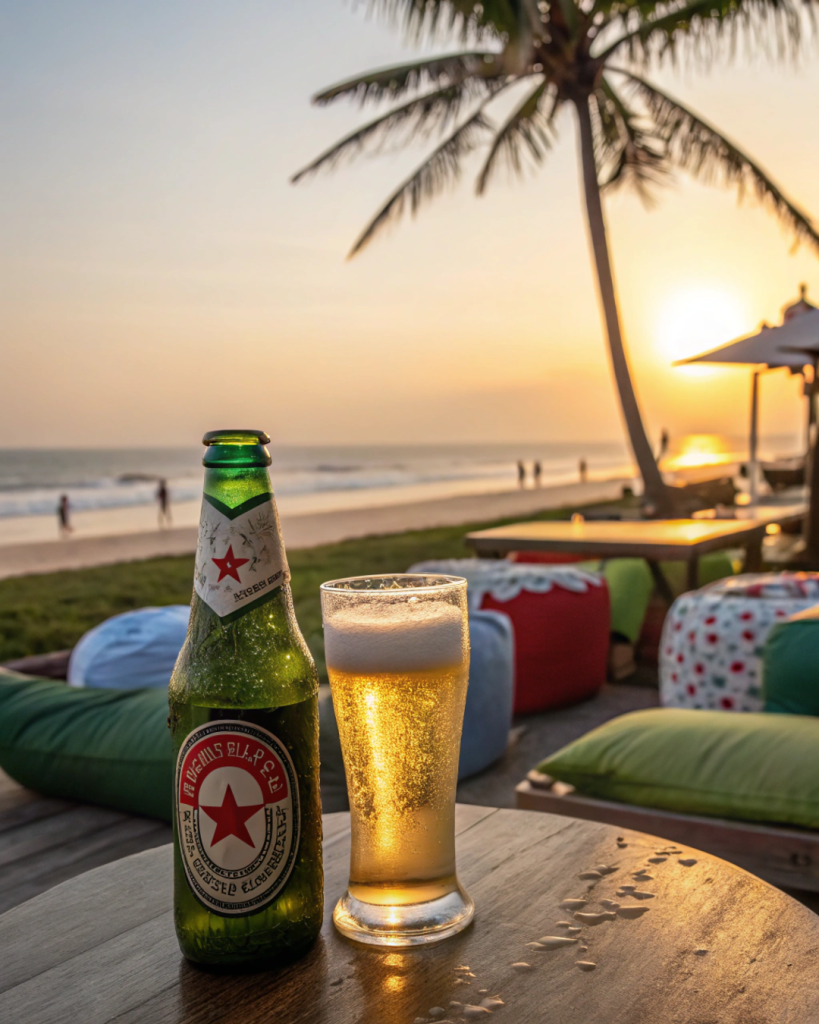
Why Bintang Beer?
When in Bali, do as the locals do—grab a cold Bintang beer and watch the sunset. This crisp, refreshing lager is Indonesia’s most popular beer and the perfect companion for beachside relaxation.
My Experience: A Sunset in Seminyak
I’ll never forget the evening I spent at La Plancha in Seminyak, sipping Bintang on a beanbag while the sky turned shades of pink and orange.
The lively atmosphere, the sound of the waves, and the cold beer in my hand made it a quintessential Bali experience.
Essential Visitor Info
- Where to Try: Beach bars in Bali or local warungs (eateries).
- Cost: 25,000–50,000 IDR (1.60–1.60–3.50) per bottle.
- Flavor Recommendations:
- Classic Bintang lager.
- Bintang Radler (lemon-flavored beer) for a lighter option.
- Local Tips:
- Pair it with ikan bakar (grilled fish) or sate (skewers).
- Learn the phrase “Satu lagi!” (One more!) to keep the drinks coming.
5. Yak Butter Tea (Tibet, China)
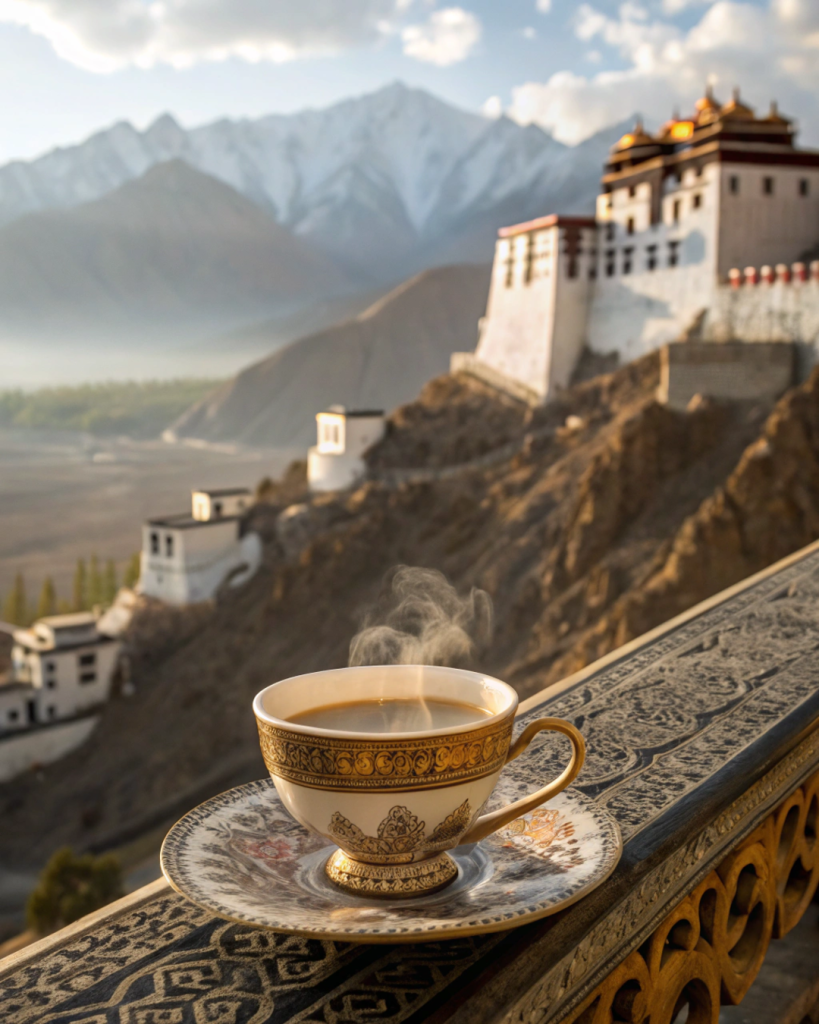
Why Yak Butter Tea?
Yak butter tea, or po cha, is a staple in Tibetan culture. Made with tea leaves, yak butter, and salt, it’s rich, creamy, and surprisingly energizing. It’s not just a drink—it’s a lifeline in the harsh Himalayan climate.
My Experience: A Warm Welcome in Lhasa
During a trek in Tibet, I was invited into a local family’s home in Lhasa. They served me a steaming cup of yak butter tea, and while the salty, buttery flavor was unexpected, it warmed me up instantly.
The family explained how it helps them stay energized during long, cold days.
Essential Visitor Info
- Where to Try: Local teahouses in Lhasa or Tibetan homes.
- Cost: 10–20 CNY (1.50–1.50–3) per cup.
- Flavor Recommendations:
- Traditional yak butter tea.
- Sweetened versions for beginners.
- Local Tips:
- Drink it slowly to adjust to the unique flavor.
- Pair it with tsampa (roasted barley flour) for a traditional snack.
6. Kombucha (Vietnam)
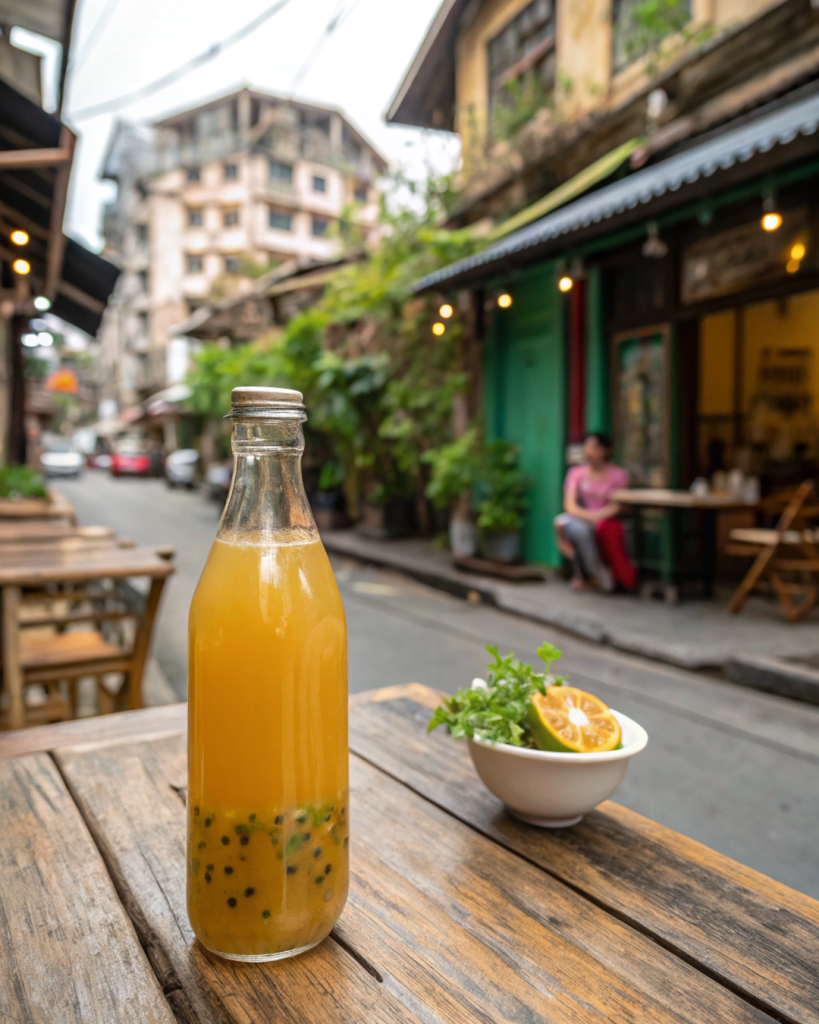
Why Kombucha?
While kombucha has gained global popularity, Vietnam’s version is uniquely refreshing.
Made with green tea, sugar, and a SCOBY (symbiotic culture of bacteria and yeast), it’s fizzy, tangy, and packed with probiotics.
My Experience: A Hidden Café in Hanoi
I stumbled upon a tiny café in Hanoi’s Old Quarter that specialized in homemade kombucha. The owner, a passionate fermenter, explained how she infuses it with local fruits like dragon fruit and passionfruit.
I tried the passionfruit kombucha, and it was the perfect balance of sweet and tangy.
Essential Visitor Info
- Where to Try: Craft cafés in Hanoi or Ho Chi Minh City.
- Cost: 50,000–70,000 VND (2–2–3) per bottle.
- Flavor Recommendations:
- Passionfruit kombucha.
- Lemongrass and ginger kombucha.
- Local Tips:
- Ask for “ít đường” (less sugar) if you prefer a tangier flavor.
- Try it with a bowl of pho for a refreshing contrast.
7. Lassi (India)
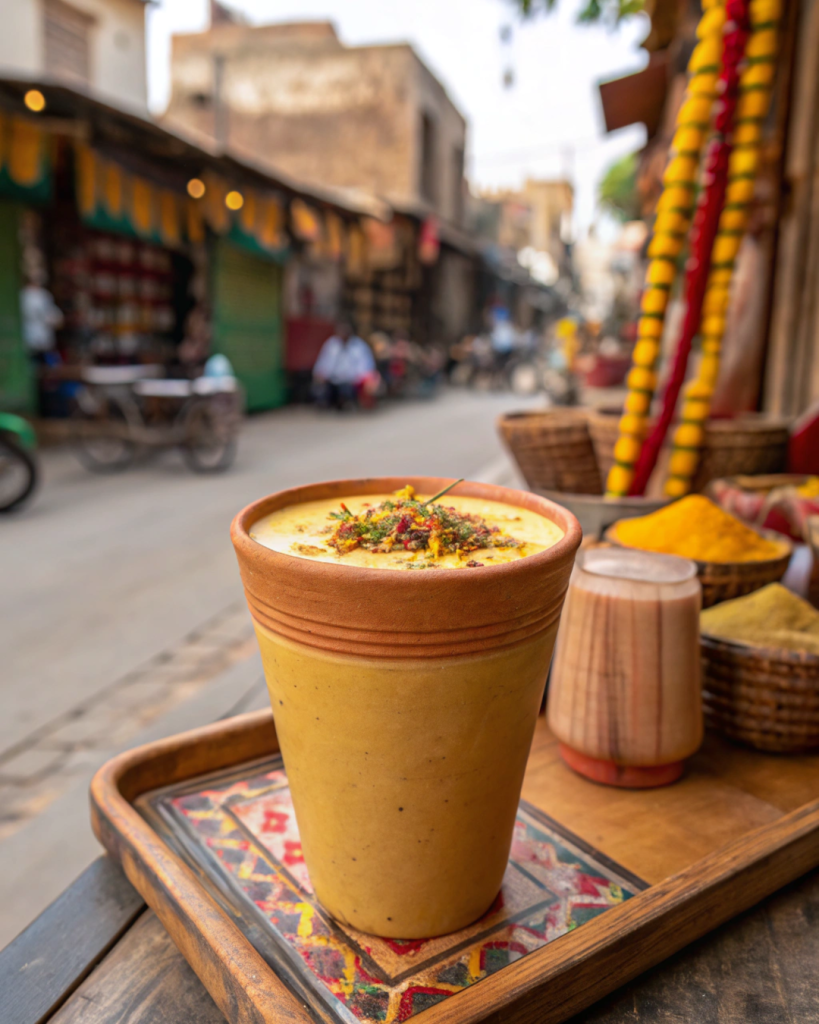
Why Lassi?
Lassi is a creamy, yogurt-based drink that’s both refreshing and filling. It comes in sweet or savory versions, with flavors like mango, rose, or cumin. It’s the perfect way to cool down after a spicy Indian meal.
My Experience: A Mango Lassi in Jaipur
On a sweltering afternoon in Jaipur, I stopped at a small shop and ordered a mango lassi. The first sip was pure bliss—thick, creamy, and bursting with mango flavor. It was so good, I went back for seconds!
Essential Visitor Info
- Where to Try: Street stalls in Jaipur or Amritsar.
- Cost: 50–100 INR (0.60–0.60–1.20) per glass.
- Flavor Recommendations:
- Sweet mango lassi.
- Salty lassi with cumin and mint.
- Local Tips:
- Ask for “bina malai” (without cream) if you want a lighter version.
- Pair it with paratha or samosas for a hearty snack.
8. Soju (South Korea)
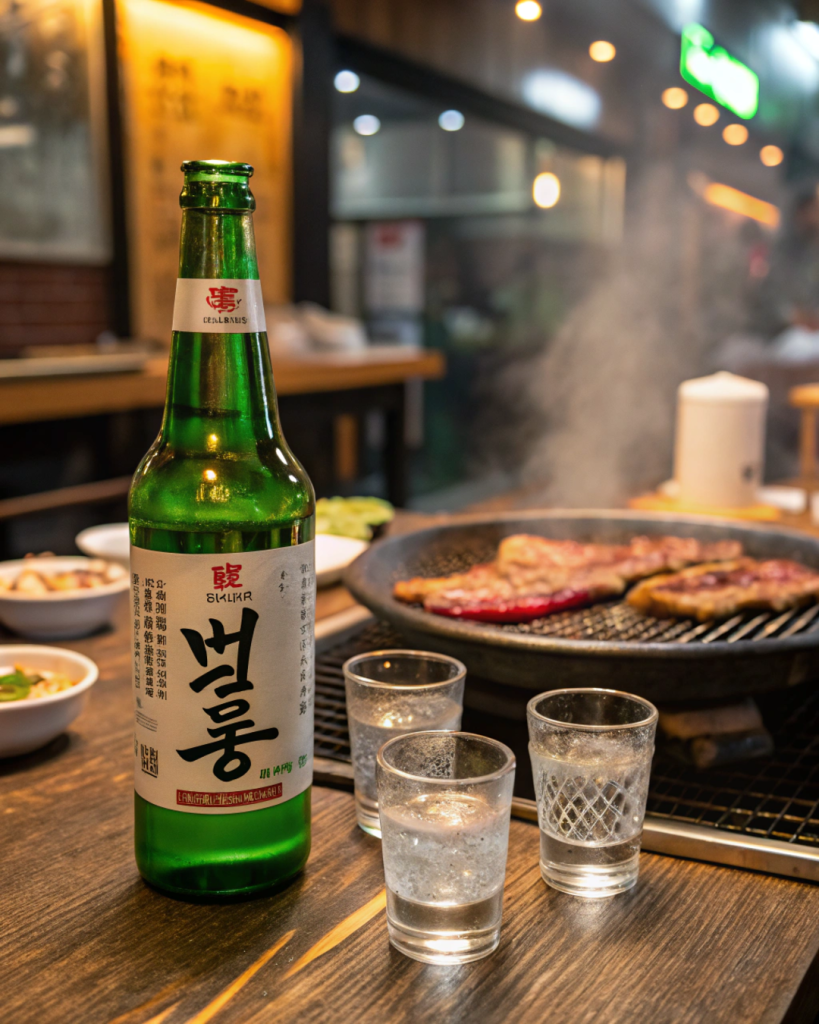
Why Soju?
Soju is South Korea’s national drink, a clear, slightly sweet spirit that’s often compared to vodka. It’s cheap, versatile, and a staple at Korean barbecues and karaoke nights.
My Experience: A Karaoke Night in Seoul
During a night out in Seoul, my friends and I shared a bottle of soju while singing our hearts out at a noraebang (karaoke room).
The soju made us brave enough to attempt high notes we’d never dare try sober!
Essential Visitor Info
- Where to Try: Korean BBQ restaurants or convenience stores.
- Cost: 3,000–5,000 KRW (2.30–2.30–3.80) per bottle.
- Flavor Recommendations:
- Classic soju.
- Flavored soju (peach, grapefruit, or yogurt).
- Local Tips:
- Mix soju with beer to make so-maek (soju + maekju).
- Say “geonbae!” (Cheers!) before drinking.
9. Butterfly Pea Tea (Thailand)
Why Butterfly Pea Tea?
This mesmerizing, deep-blue herbal tea isn’t just beautiful—it’s also packed with antioxidants and changes color when mixed with lemon! Known for its earthy, floral taste, butterfly pea tea is a popular caffeine-free drink in Thailand.
My Experience: A Magical Drink in Chiang Mai
At a small café in Chiang Mai, I watched in awe as my server poured lemon juice into my deep-blue tea, transforming it into a stunning purple hue. The refreshing taste, combined with its magical color shift, made it one of the most fascinating drinks I’ve ever had.
Essential Visitor Info
- Where to Try: Cafés and night markets in Chiang Mai or Bangkok.
- Cost: 30–60 THB (around $1–$2) per cup.
Flavor Recommendations:
- Plain butterfly pea tea.
- Honey-lemon butterfly pea tea for a tangy twist.
Local Tips:
- Add honey for natural sweetness.
- Try it iced for a refreshing summer drink.
10. Teh Tarik (Malaysia)
Why Teh Tarik?
Teh Tarik, Malaysia’s famous “pulled tea,” is a frothy, sweet milk tea made by repeatedly pouring it between two cups to create its signature smooth texture. It’s a staple in Malaysian cafés and roadside stalls.
My Experience: Watching the Art of Teh Tarik in Kuala Lumpur
I stood mesmerized as a street vendor skillfully “pulled” the tea, creating a perfect foamy top. The rich, creamy flavor, balanced with just the right amount of sweetness, made it the ultimate comfort drink.
Essential Visitor Info
- Where to Try: Local mamak stalls (Indian Muslim eateries) or street vendors in Kuala Lumpur.
- Cost: 2–5 MYR (around $0.50–$1) per cup.
Flavor Recommendations:
- Classic Teh Tarik.
- Ginger-infused Teh Tarik for a spicy kick.
Local Tips:
- Order “kurang manis” (less sweet) if you prefer it with less sugar.
- Pair it with roti canai (flaky flatbread) for a traditional Malaysian breakfast.
From the creamy richness of Thai iced tea to the salty warmth of yak butter tea, Asia’s drinks are as diverse as its landscapes.
Each one tells a story—of history, culture, and the people who craft them with passion.
So, the next time you travel to Asia, don’t just try the food—sip your way through the continent. Who knows? You might just discover your new favorite drink!
Which of these unique drinks would you love to try first? Let me know in the comments.

